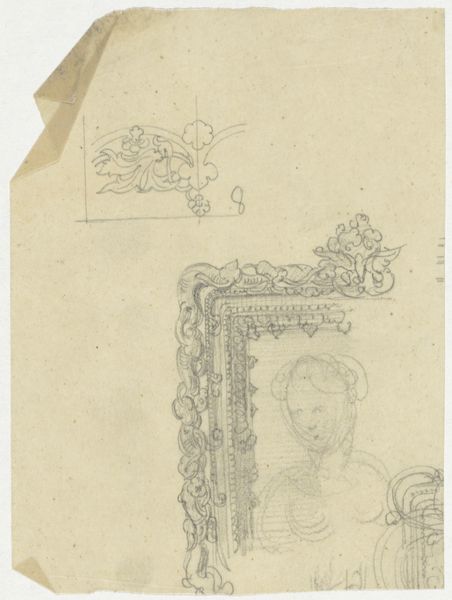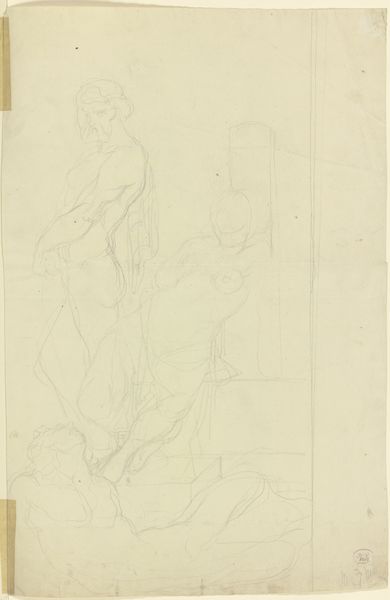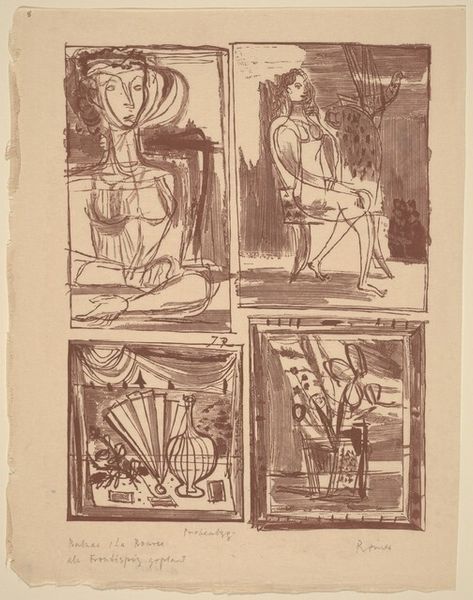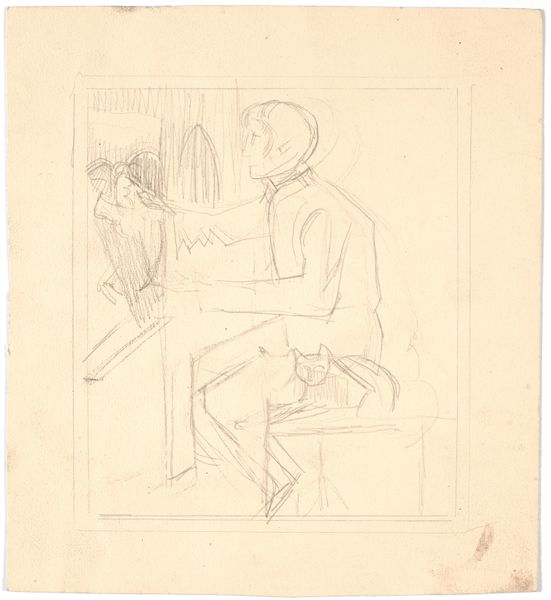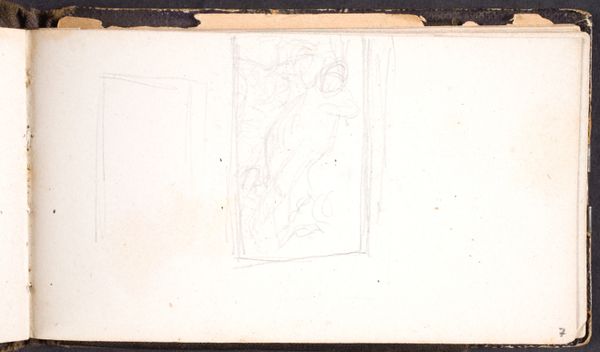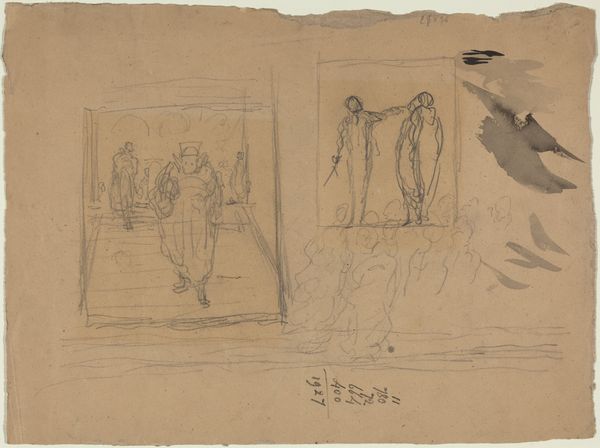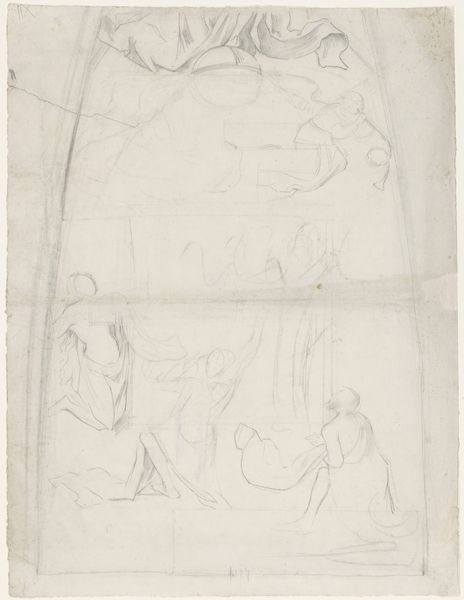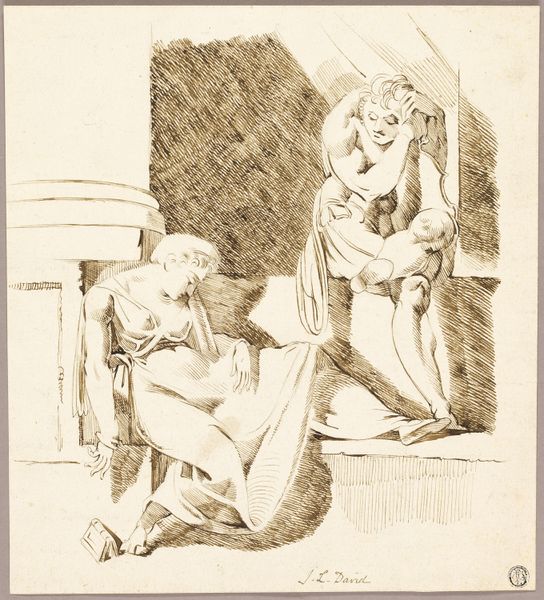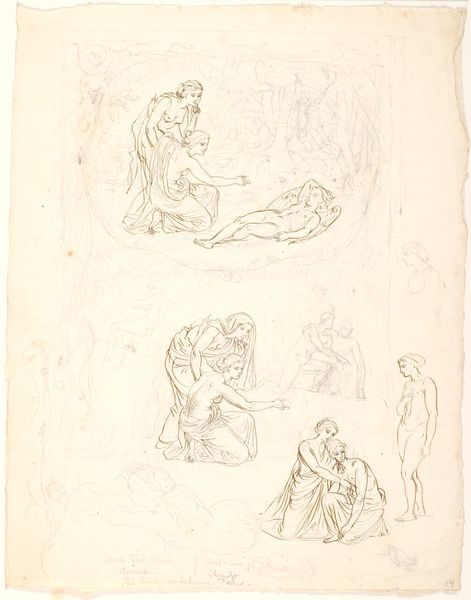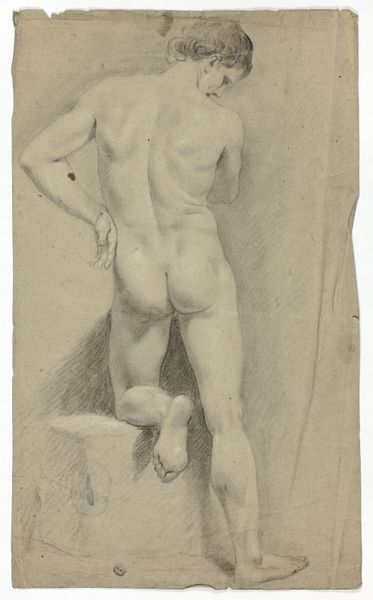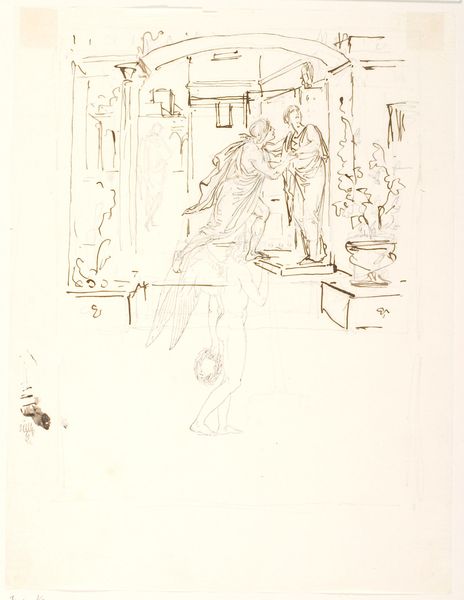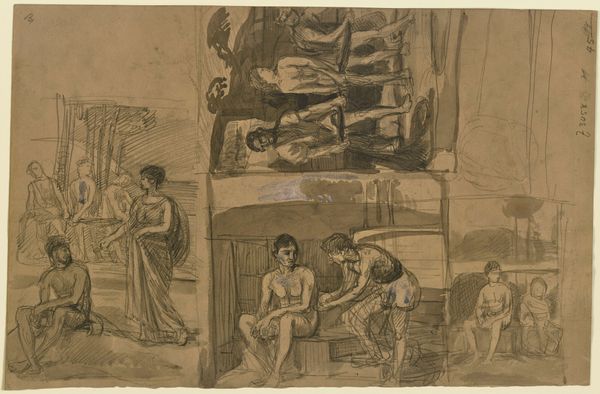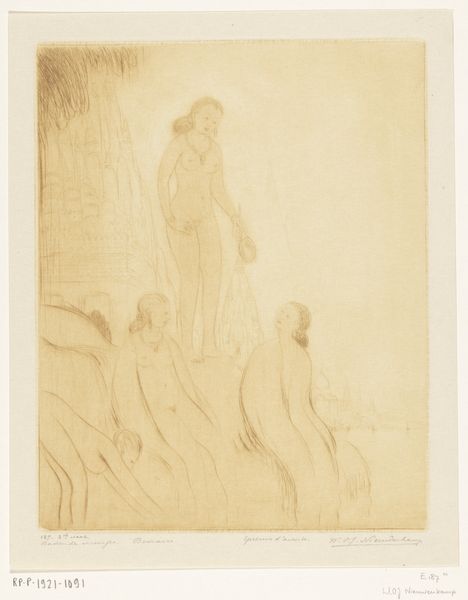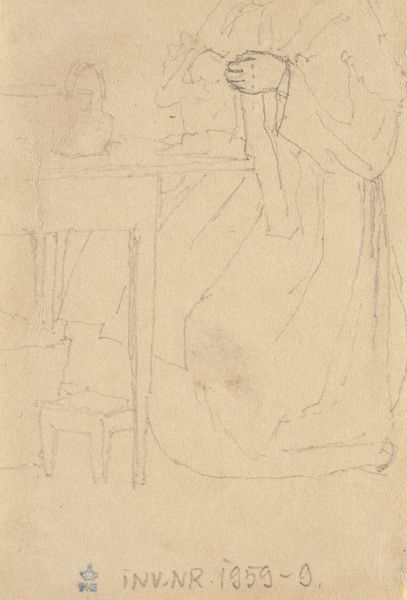
drawing, paper, ink, pencil
#
portrait
#
drawing
#
16_19th-century
#
pencil sketch
#
figuration
#
paper
#
ink
#
pencil
#
history-painting
#
academic-art
#
italian-renaissance
#
nude
Copyright: Public Domain
Curator: This drawing, titled "Sitzende und stehende Figuren, ein weiblicher Akt," or "Seated and Standing Figures, a Female Nude," comes to us from Hans von Marées, around 1873. What do you see in it? Editor: It's immediately striking how fragmented it is. It feels more like a series of preliminary sketches layered atop each other than a finished work. The lines are light, exploratory...almost tentative. Curator: Precisely. Marées was deeply invested in a kind of humanist, utopian vision, drawing heavily from the Italian Renaissance in terms of its philosophical foundations. This piece allows us insight into the development of his history paintings and his process. Here we can trace classical forms finding their place in modernity and question why those specific historical points of reference became prominent during the Unification period. Editor: The composition is interesting. The juxtaposition of figures in varying states of completion—some fully rendered, others merely suggested—creates a visual hierarchy. Notice the central figure, the standing nude, her pose and placement anchor the entire drawing. How interesting! Curator: And consider the figures around her: Are they commenting on or participating in the central figure's moment of reflection? Do these echoes of historical styles enhance our understanding of ideal femininity? Marées sought to reconcile the classical ideal with a burgeoning modernity. How can these figures exist within contemporary power structures? Editor: There’s a beautiful contrast between the precision of the nude and the looser rendering of the background. Look at the way the hatching creates depth and volume, drawing the eye deeper into the scene. The strategic use of shadow gives her presence weight. Curator: In unpacking this image, we’re confronted with Marées’ artistic journey, the context that birthed it, and, perhaps, new interpretations that encourage a fresh perspective on historical artwork and its relevance today. Editor: Yes, indeed. Examining this composition helps understand not only the work itself, but our modern reading of proportion, light, and subject within it.
Comments
No comments
Be the first to comment and join the conversation on the ultimate creative platform.

